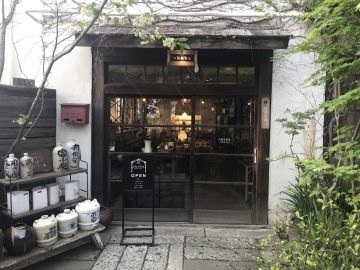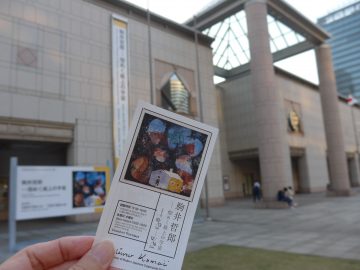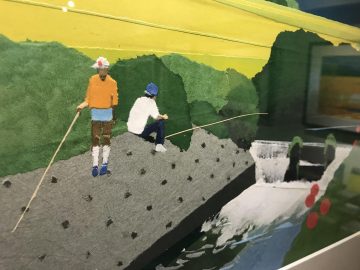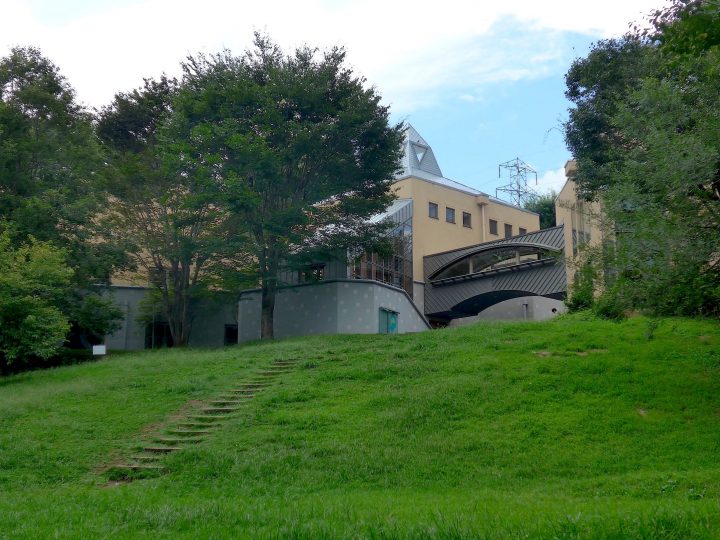Interview with media artist Jin Si-young (Gwangju, South Korea)
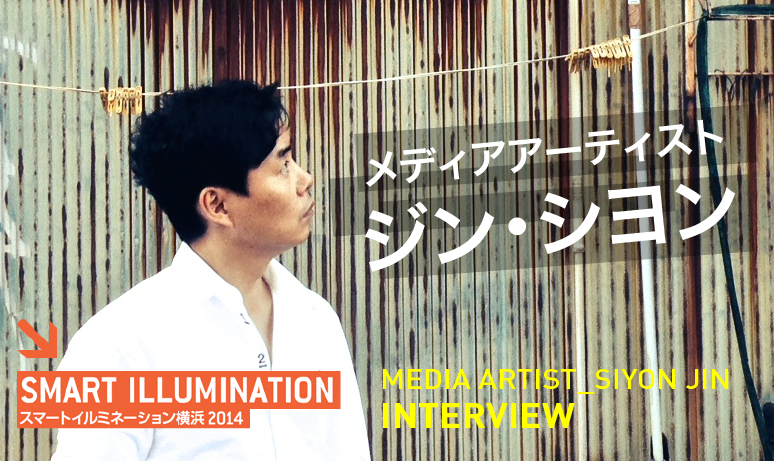
Interview & text: Akiko Inoue
Yokohama, currently hosting the "Culture City of East Asia 2014" event to promote cultural exchange among Japan, China and Korea, is offering more opportunities to see exhibitions and performances by artists from not only the three countries but also other parts of Asia. Meanwhile, Jin Si-yeon, a media artist and director based in Gwangju, Korea, recently visited Yokohama for the first time. During his stay, he served as a presenter for the "Port Journey Project" at Zou-no-hana Terrace, interacted with artists from port cities around the world, and also toured the various cultural centers of Yokohama. We interviewed Jin Si-yeon.
Gwangju, South Korea, where Jin Siyeon is based, is widely known as the site of the Gwangju Biennale and has been attracting attention as an art town in recent years. On the other hand, it is also the city where the citizens of Gwangju denounced the military government's conspiracies and launched a movement to realize democracy (the May 18 Gwangju Democratization Movement) in the 1980s, and it is a city where the energy of democratization and its dark memories are represented with complex contrasts. Jin Siyeon is also well known for his installation works using LED light tubes, and will be participating in "Smart Illumination Yokohama 2014," which is "an attempt to create a new night view of Yokohama," and will be presenting his representative recent work, the "FLOW" series.
Now, I would like to ask a question.
"About Yokohama" – The port city of Yokohama as seen through Jin Shi-yeon's eyes
- When you visited Yokohama for the first time to participate in the "Port Journey Project" at Zou-no- hana Terrace, you apparently toured several of the city's cultural sites, including the currently ongoing Yokohama Triennale and the Koganecho Bazaar. What are your impressions of the city of Yokohama? Do you have any favorite places?
The most impressive place was the Osanbashi International Passenger Terminal. I am a lecturer in the Department of Architecture at Kyung Hee University in Korea, so I am very interested in architecture. So I was amazed when I first saw the Osanbashi Passenger Terminal. The rooftop of the terminal was designed for the enjoyment of the public, and I thought it was very modern. I didn't have time to go up there during my last visit, but I would like to go after the "Smart Illumination Yokohama 2014" exhibition, which will be held soon, is over.
The Red Brick Warehouse was also very impressive. Not only does it have a unique Yokohama atmosphere, but it has also been used as a plaza for the general public to enjoy, and instead of simply leaving the old buildings as they are, they have been renovated and are now being used as the most impressive place, so there is a lot to learn from it.
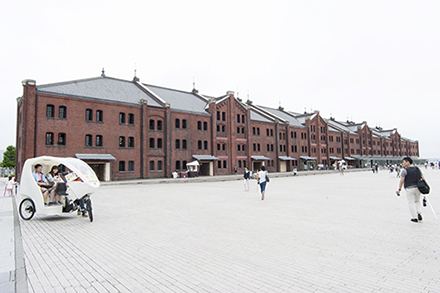
Yokohama Red Brick Warehouse Photo: Jin Shiyeon
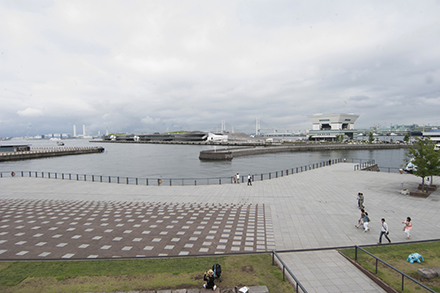
Osanbashi Passenger Terminal seen from Zo-no-hana Park. Photo: Jin Shi-yeon
- What are your impressions when comparing the two cities of Gwangju and Yokohama?
Gwangju has long been known as the city of arts. The Gwangju Biennale has been held there since 1995, and the National Asia Culture Hall, a facility for researching and presenting Asian culture, is scheduled to open next year, so it can also be called a cultural city. Yokohama, with its long history and exotic scenery, is a tourist city that attracts many tourists, but it is also a cultural city. I felt this strongly when I visited the Yokohama Triennale 2014 and the Koganecho Bazaar 2014 during my recent stay.
Gwangju also means "city of light," and as its name suggests, it has fostered the development of LED and the light industry, and since 2011 has been in the process of being registered as a UNESCO Media Arts Creative Cities Network*. The "Smart Illumination Yokohama" event held every year in Yokohama is also an event that attempts to create new night views using light, so from that perspective I feel there are similarities between the two cities.
*Media Arts City, one of the registered areas of the UNESCO Creative Cities Network
"Jin Siyeon's Artwork" - Possible collaboration
-Looking at your career, you have been involved in creative activities in a variety of fields, including contemporary dance, ceramics, collaborations with cosmetics brands, and car manufacturers (Peugeot). I understand that you majored in painting at school, but how did you come to create the kind of work you do now?
I majored in painting at university, but I studied New Forms at the Pratt Institute Graduate School in New York. I think the fact that people from various majors came together and created new forms and genres without being bound by them has influenced my current work, which is collaboration across multiple disciplines.
- What kind of impact does it have specifically?
I think all artists think about the theme of their new work and think about it seriously, but I feel that media art has the great advantage of being easily combined with other genres and being able to create new forms of work through various methods. Encounters with genres such as performing arts, advertising, and products stimulate the artist's curiosity and also create a pipeline to commerce, so I think that this will help to raise awareness of media art even among people who have not had much contact with it. Also, in collaborations with performing arts, my work becomes a stage set, and the image (virtual image) brought about by the video projection interacts with the real body of the actor, becoming one with the work on stage, creating a more dramatic impression than the work alone.


Shadow of Flower, 2014, 《Clay Broods Light》Collaboration Show
(Collaboration with a ceramic artist)
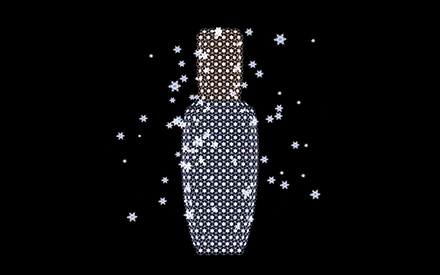
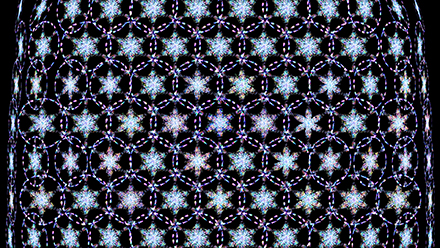
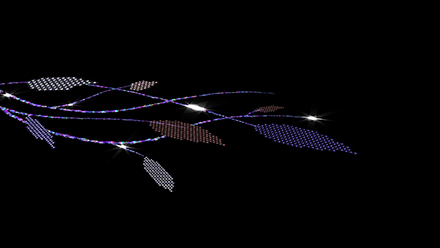
Sulwhasoo Cosmetic CF, Stillcut, 2014
(Collaboration with a cosmetic brand)
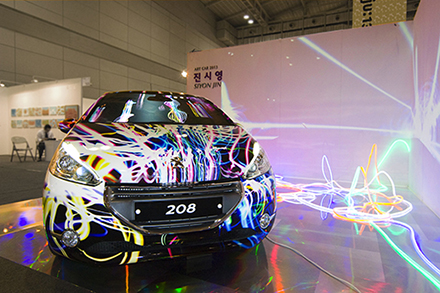
JIN PEUGEOT ART CAR, 2013, Gwangju Art Fair
(Collaboration with Peugeot)
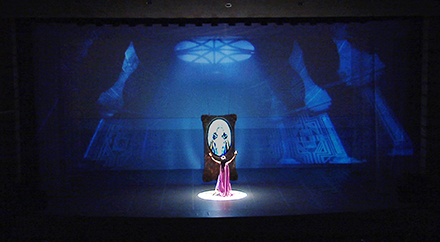

Snow White, Green Ballet & Siyon Jin Media Art Collaboration
(Collaboration with contemporary dance)
"Jin Siyeon's Artwork" - A continuous stream of LED lights
About the "Flow" series
- I'd like to ask you about your recent representative work, the "FLOW" series. The "FLOW" series creates a space by intertwining colorful LED light tubes in complex ways. Why did you choose LED light as the material for the series?
I started using LEDs in 2008, feeling that the flat images of the video works I had been making up until then were lacking, and I thought it would be nice to combine a kind of analog element that can be touched directly with media art. So, for the "FLOW" series I've been working on since 2011, I chose linear LED tubes as the most suitable material to directly express the flow of light.
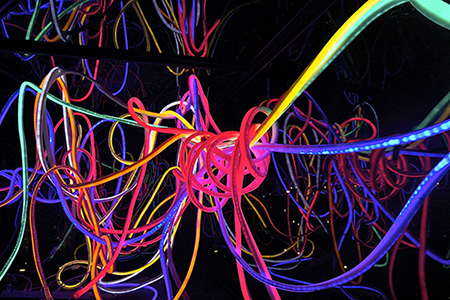
FLOW, 2013, LED Installation, Daedam Art Museum
- The theme of the "Smart Illumination Yokohama 2014" in which you will participate is "Primary Light: Light that Talks". The most primary light that is closely related to humans is fire. From then on, humans have invented various types of light up to the present. The LED lights used in your work can be said to be cutting-edge light using modern technology, but at the same time, the title "FLOW" evokes images of fundamental natural phenomena such as the flow of rivers and water, and the way water sways in the wind. I feel that your works often contain motifs that are common to everyone, such as nature. What is your intention in deliberately trying to combine the two elements of modern technology and nature in one work?
Contemporary art can be said to be a reflection of the times, so it is natural that contemporary artists use computers and LEDs. And in the future, even newer materials will emerge. However, I want to convey the most fundamental message to help busy modern people recover their lost humanity and the preciousness of nature, and this is the theme of my work.
- What are your thoughts on the primary relationship between city and light, and between people and light, which the theme "Primary Light - Communicating Light" aims to explore?
My "FLOW" series originated from the internet, Facebook friendships that are inseparable from the people who live in cities. The reason is that if we assume that Facebook friends all over the world are connected by lines, we can eventually create a world map, and this work began with the idea of connecting people's chi (energy) in the East. At that time, I thought of these "connecting lines" as light.
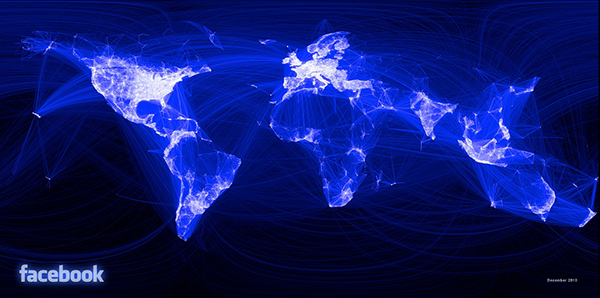
Facebook Map, related image with Flow 47
If the flow of light seen in my video works is a collection of light that becomes actual when projected onto the body of a dancer, then my recent "FLOW" series is an attempt to draw light drawings in actual space using Line tube LEDs that you can actually touch. This expresses the relationship with the theme of Smart Illumination Yokohama 2014, "Primary light, light that speaks."
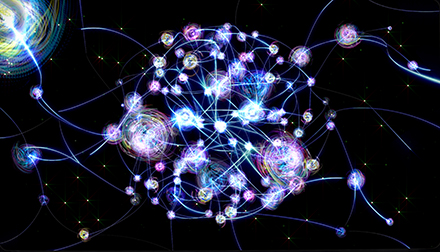
Flow 47, HD Single channel video still, 2011
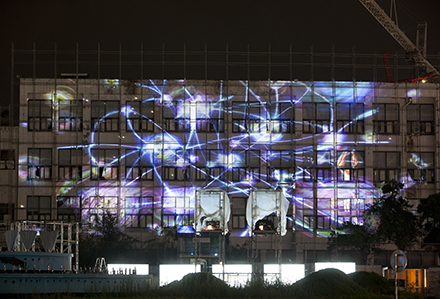
Flow 47, Single channel video, projection, 2012, Gwangju City
About Japanese Media Art - Jin Shiyeon's View of Japanese Contemporary Art
- Finally, please tell us if there are any Japanese artists or projects that interest you.
There are many Japanese artists that I have been interested in for a long time. To name a few, they are Hiraki Sawa, Kohei Nawa, Yayoi Kusama, Takashi Murakami, and Mariko Mori. I think Yayoi Kusama and Takashi Murakami's collaboration with Louis Vuitton is also a good example of a relationship between a company and an artist.
I am also interested in the Yokohama Triennale, the Japan Media Arts Festival, and the Mori Art Museum exhibitions. I hope that Sapporo Media Art and Gwangju Media Art will be able to collaborate well in the future as member cities of the Media Arts City of the UNESCO Creative Cities Network.
Finally, I feel very honored to have had the opportunity to participate in Smart Illumination 2014 through my connection with Spiral, the organizer and art director of Smart Illumination Yokohama 2014, Wacoal Art Center Co., Ltd. I would like to continue to make efforts to maintain steady exchanges not only with myself personally, but also with Japan, Korea, and Gwangju.
Jin Shiyong's work, which will be shown in Japan for the first time, can be seen at "Smart Illumination Yokohama 2014". His work is planned to be installed in two places: an installation at Zou-no-hana Terrace Cafe, and a "shuttle ship" that will transport visitors to and from the venue during the event. This year marks the fourth year of the five-day event "Smart Illumination," where environmental technology essential for the future and the creativity of artists create a new night view. Please come and experience the new night view of Yokohama that can only be seen during the event period.
Overview of "Smart Illumination Yokohama 2014"
<This event has ended.>
Thursday, October 30, 2014 - Monday, November 3, 2014 (National Holiday) [5 days]
17:00-22:00
Main venue: ZOU-NO-HANA Park
Translated by: Tomoe Oshima
